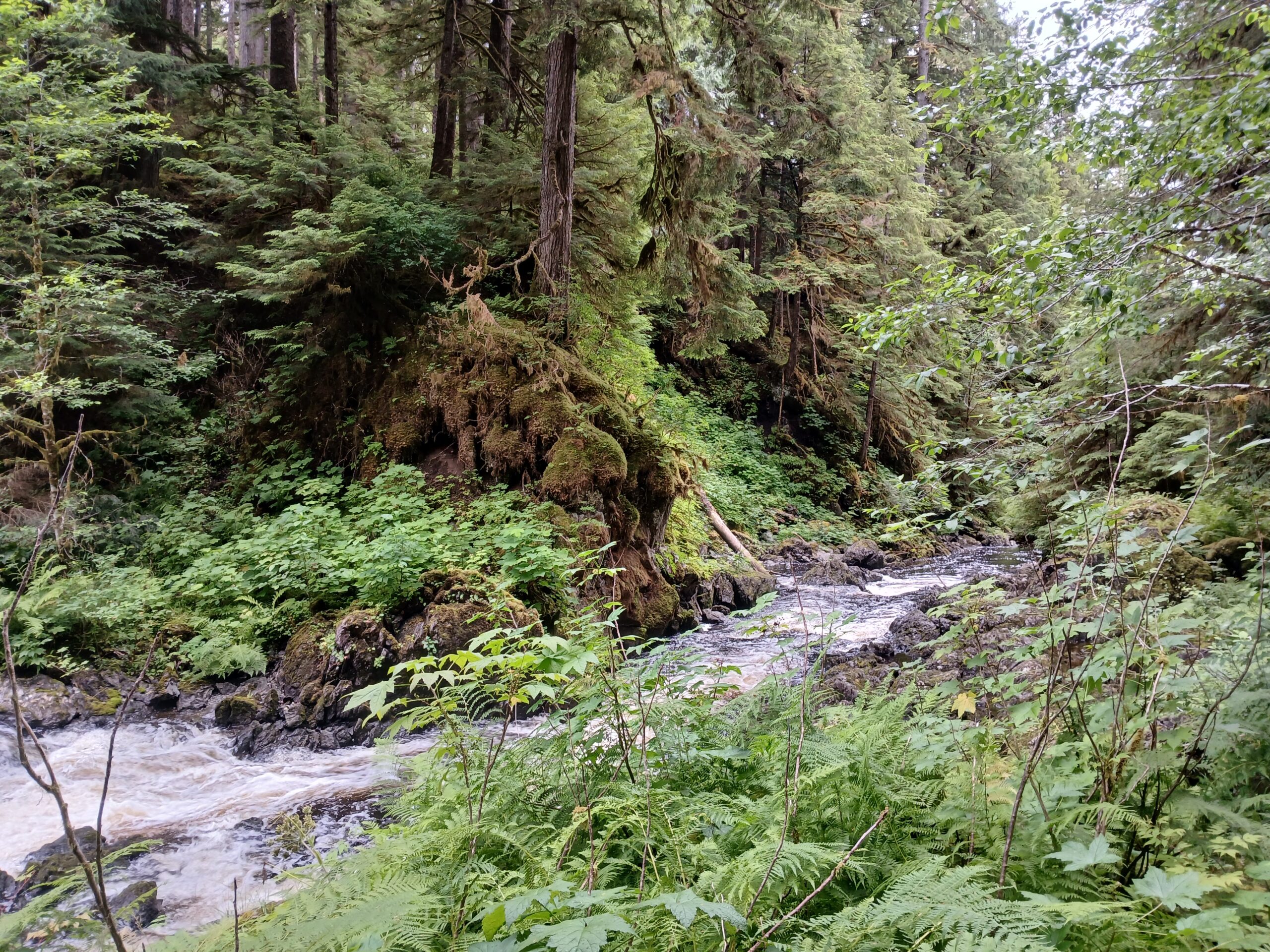
I come from haunts of coot and hern,
I make a sudden sally
And sparkle out among the fern,
To bicker down a valley.
Alfred, Lord Tennyson’s “The Brook” has long been one of my favorite poems, ever since my grandfather taught it to me many years ago. It tells of a quiet country stream as it tumbles endlessly out of the hills and wends its way down to the river, washing over stones and reeds all the while in an eternal turbulence. On the Tongass, our nation’s rainiest forest, water is an ever-present force that drives life in ways quite unlike the lower 48. Dozens of these streams bubble up in abundance from a sponge of karst and filter down through the mountain boulders, wedged apart by rock-brakes. They fan out into huge lakes that are fringed by little wildflowers bearing the names of Victorian-era botanists, Tennyson’s contemporaries: Packer, Tolmie, Lyngbye, Menzies. These are flanked by a sprinkling of wild salmonberries and huckleberries at the forest’s edge, where water has been piped out of the ground into their hundreds of little fruits. Collecting seeds from these shrubs requires several turns of a wash-rinse-repeat cycle; most other plants, their fruits being dry capsules, instead need dried quickly to prevent molding.
The waters slip across the backs of salmon huddled at the lake’s outlet and tumble farther down waterfalls, until they finally become tinged with salt as they near the ocean. The water sedge gives way to Lyngbye sedge and the rocky beaches are strewn with popweed, an edible seaweed that provides an excellent source of iodine.
I wind about, and in and out,
With here a blossom sailing,
And here and there a lusty trout,
And here and there a grayling.
The waters of Alaska are known as one of the most productive fisheries in the world, and for good reason. Trout and salmon, crabs and squid flutter through the streams and bays in titanic numbers, converting flies and algae into suppers for eagles, wolves, and fishermen. It is no wonder that the Tongass is sometimes called the Salmon Forest – in between its hundreds of islands swim countless millions of them. They not only sustain a subsistence lifestyle unique to Alaska, but much of the state’s commerce as well. One in ten residents of Southeast Alaska are in some way employed in the fishing industry. This includes not only commercial fishermen, but processors, shipbuilders, biologists, guides, and a host of other colorful characters.
My career plan is to become an agronomist and work with farmers to improve crops, not fish. This spring, I debated whether to come work in Alaska in a position that I thought to be largely unrelated to agriculture or the food system in general. The longer I have worked here, however, I realize that I was mistaken; Alaskans on Prince of Wales Island live off the land to an extent that I was quite unfamiliar with growing up in Pennsylvania farm country. Wild foods are a critical resource in rural Alaska, and our work in forest restoration creates habitat for the wildlife and edible plants that are the mainstays of everyday life here, and healthy forests ensure high water quality. I have learned an incredible amount about local food systems through this internship and how sustainable, carefully managed forestry will help this traditional part of life in southeast Alaska continue for many more generations.
And out again I curve and flow
To join the brimming river,
For men may come and men may go,
But I go on for ever.

